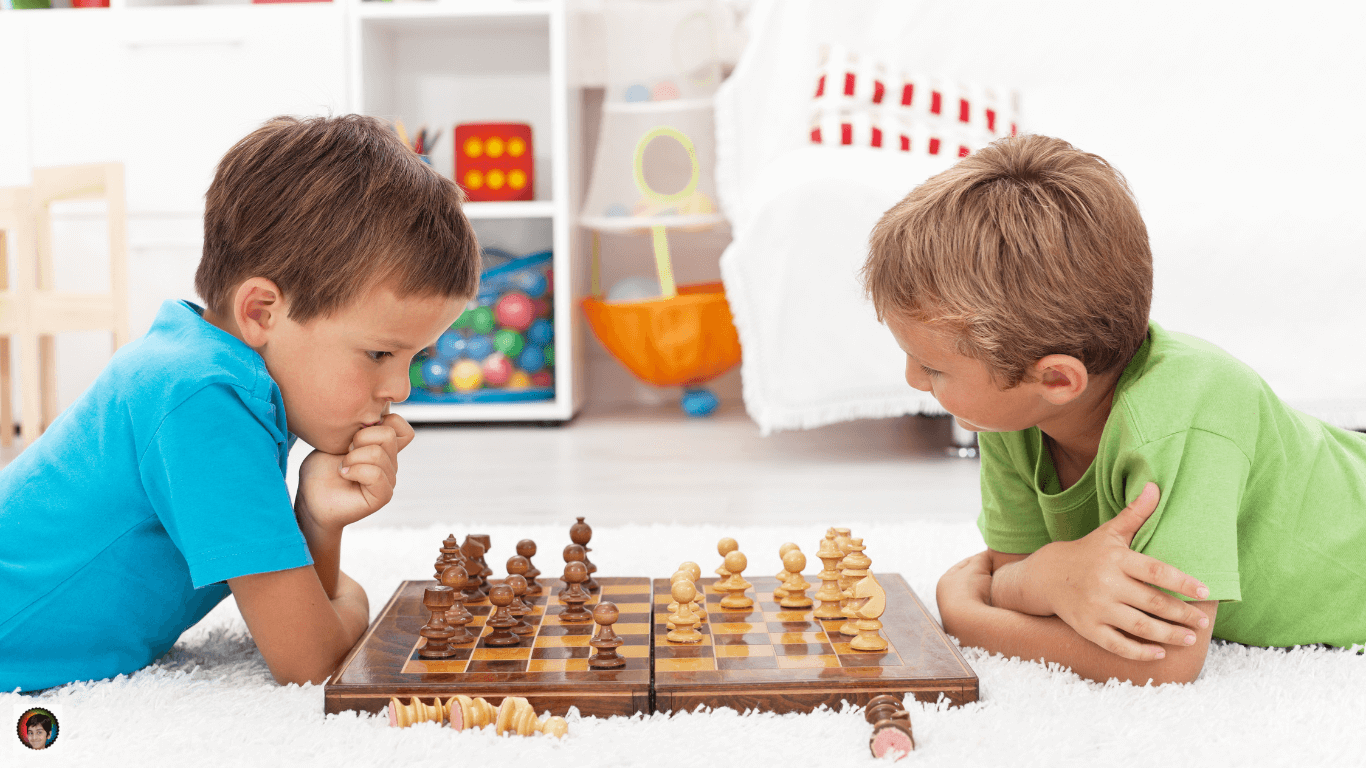Chess lessons are a great way for kids to learn the basics of the game while also developing their logical thinking and decision-making skills. These are essential life skills that can carry over into many different areas of their lives.
Learning how to play chess can also teach players to be patient as they wait for their opponents to make their moves. This is an important skill for people in a fast-paced world that demands quick results and immediate action.
Basics of Chess Lessons For Kids
Chess is one of the oldest and most popular board games, which is played by two opponents on a checkered board with specially designed pieces. Players alternate turns in accordance with fixed rules, attempting to force the opponent’s principal piece into checkmate, a position where it is unable to escape capture.
Chess can be played using various alternative rules that allow for additional pieces, different time limits and more complex strategies. These can be helpful if you are looking to expand your chess knowledge and improve your game.
The first step in playing chess is to set up the board correctly. The board must be placed so that each player has a light-coloured square in their bottom right hand corner.
Next, each player must place their chess pieces on their side of the board. The rooks go in the corners, the knights next to them, followed by the bishops and finally the queen.
Each piece moves in a specific way, as explained later in this tutorial. For instance, the king can move a single space horizontally, vertically or diagonally in a single turn.
Another important piece in chess is the knight, which can jump over other pieces without capturing them. However, the knight cannot move through pieces of the same colour.
Pawns, on the other hand, can move two squares in a row on their first move (called “en passant”), which is a special rule that allows them to capture an opponent’s piece as it moves past. This is a powerful tool that can help you take control of the game and win the match!

Regardless of your age or experience level, learning the basics of chess can help you understand the game better and be a more effective player. With practice, you will be able to apply this information to a variety of scenarios and develop new strategies for the game.
Rules of Chess Lessons For Kids
Chess is one of the most popular board games, and there are several rules that need to be understood in order to play well. These include the rules for moving pieces and capturing them, as well as the rules for deciding whether or not a game is a draw.
The chess board is divided into two opposing sides, called White and Black. Each player takes turns to move their pieces.
Pieces move in a line, forward, backward, and side-to-side. Each type of piece moves differently, and there are 6 types: king, queen, rook, knight, bishop, and pawn.
When a piece moves, it must do so legally. This means that it cannot land on a square where an opponent’s piece is already on, or move through any other piece.
Some pieces can capture other pieces, while others can defend their own piece against attack (by jumping over or defending from a jumping piece). Each type of piece has its own rules for how it moves and takes.
Pawns are the weakest of all chess pieces, but they do have special powers that can be useful to players. They can move one space in either direction and can take any square that is diagonally in front of them (except their own – they cannot be captured there).
There are some interesting tricks for pawns too! Some pawns have the ability to advance two squares in a single move, known as en passant.
Another interesting trick for pawns is that they can also promote to higher pieces. This is done by advancing to a vacant square on the opposite side of the board.
The king is the most important chess piece, and his life is sacred. However, it can be put in checkmate if an opponent’s piece is attacking it.
Tactics
Chess tactics are a critical part of every chess player’s arsenal. They allow you to win more games and get closer to victory, and they can turn you into a powerful opponent. Some of the greatest players in history, such as GM Mikhail Tal and GM Judit Polgar, were considered a threat to opponents because of their amazing tactical abilities.
Tactical shots often result in material gain or checkmate, which gives the player a strong advantage. This is why studying and playing tactics is one of the best ways to improve your chess skills.
Tactics can be applied at any level of chess, from beginner to expert. Some tactics involve several moves, while others are single-move combinations.

A tactic in chess is a sequence of moves that each makes an immediate threat (a check, a material advantage, a checkmating sequence threat, or another) that culminates in the opponent being unable to respond to all of the threats without making some kind of concession. The resulting advantage is called “winning material.”
Most chess tactics entail the use of long-range pieces, such as a rook or bishop. They can be used to capture or threaten enemy pieces, either by smothering them or by attacking through them.
For example, a queen sacrifice is a tactic in which a queen is sacrificed to achieve something more valuable, such as checkmate or material gain. The queen may be sacrificed as a single move or as part of a multi-move combination.
A skewer is a tactical move that attacks an opponent’s king. It is a type of attack that occurs when the king’s own pawns are pushed away by the defending opponent’s rooks or bishops.
Endgames
Endgames are the most complicated phase of chess and can be very difficult to master. Unlike openings and middlegames, they are not reliant on a lot of pieces and often require precise moves to win.
A lot of the basic strategical themes that apply in the middle game also apply to endgames. For instance, isolated and backwards pawns are weak, bad bishops are problematic, and a King on the seventh rank is a liability.
However, endgames have a unique characters and are a great way to train your chess knowledge. By learning solid endgame principles and techniques, you are setting yourself up for long-term success in the game.
There are a number of different ways to master the concept of endgames. Some of the most useful ways are to practice endgames with a partner and to read good books on the subject.
The key is to start small and build your endgame skills from the ground up. This means learning a few fundamental endgame formations, strategies and tactics before moving on to more complex positions.
One of the most important things to remember in endgames is to be imaginative and think outside the box. It is possible to convert most types of endgames into less complex ones, so keeping an open mind and being creative will pay off in the long run.
Another essential chess principle that is important to remember in endgames is to always try to create two weaknesses in your opponent’s position. This will increase your chances of winning while increasing the strength of your first advantage.
Strategy
Strategy in chess is the ability to develop and adjust a winning plan that will enable you to win the game. Without a plan, you will aimlessly move your pieces around the board without any purpose or goal. This can result in you losing the game on a higher level of play.
Chess strategy involves long-term goals that are related to king safety, pawn structure, space, piece activity, and more. It can be difficult to learn, but once you master it, you will be able to gain an advantage over your opponents and win more games.
The concept of strategy is a fundamental part of chess, and it requires years of study to fully understand. However, there are a few basic principles that can help you improve your game and become a better player.
Material count
The most simple strategic concept is material count, which involves counting the total number of pieces on each side. This helps a player decide which side has the most material advantage and determine who has a better position on the board.
Rooks
Rooks are one of the strongest pieces in the game because they can be connected, and can move freely around the board. This ability makes them extremely valuable in the opening and middlegame when they can occupy an open file or rank.
The ability to defend your pieces is also an important part of chess strategy, as it helps you prevent attacks from your opponent. You should always defend your pieces even if they are not directly threatened, and this can be done in many different ways.


